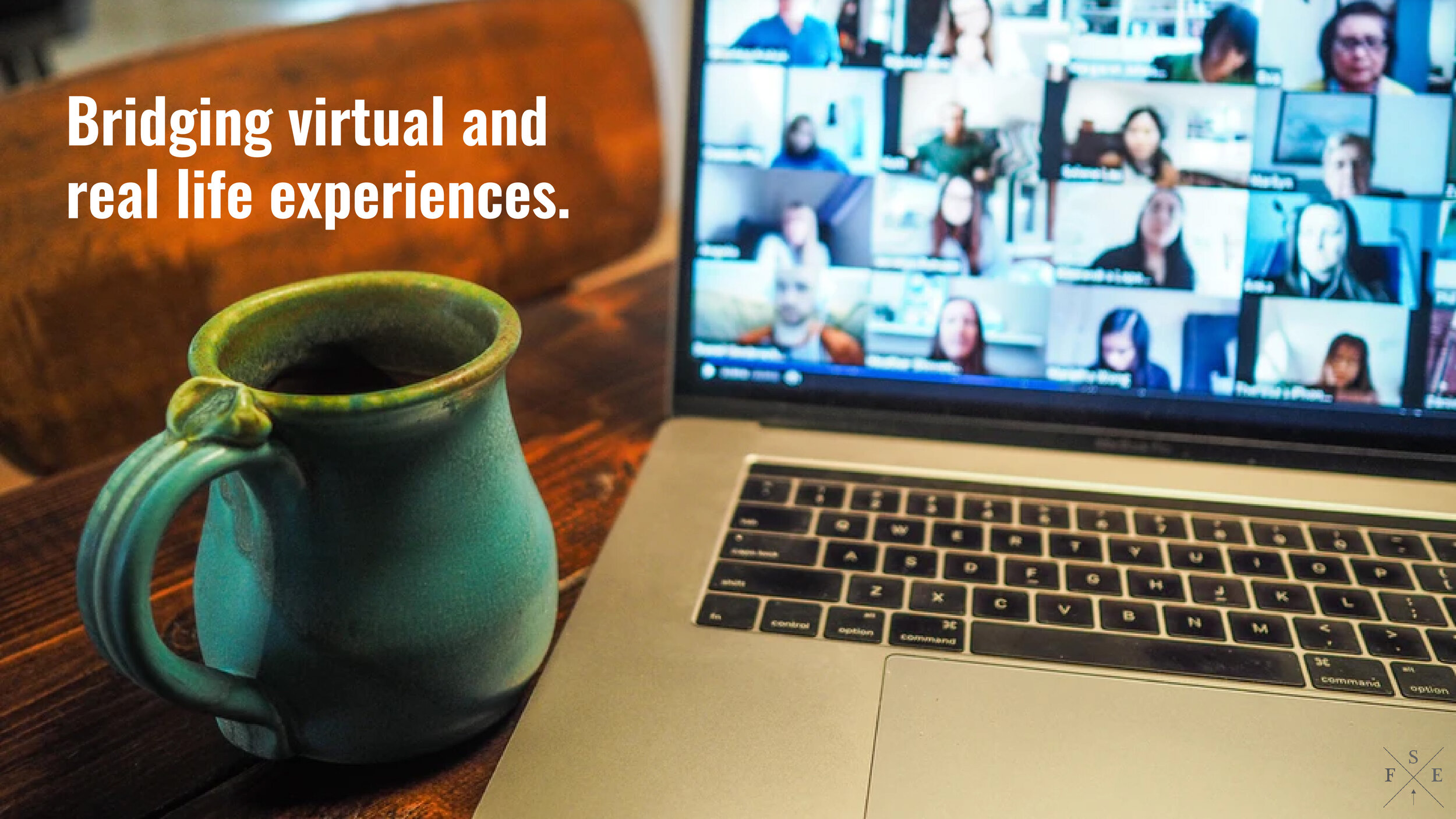
Bridging Virtual & Real Life Experiences.
Business models now need to become exponentially more social, lean, integrated, and circular to stay current. The challenge is to ensure that emerging technologies meet difficult-to-reach social goals, while being “lean” across scarce forms of capital, integrated from the point of use right out to the edges of the atmosphere and biosphere, and part of an increasingly circular economy.
Virtual Event Planning Start Up
A Sustainable Business Model
Creative strategy, circular business model design, design research, user-experience design, and information technology system
Collaborators: Jenn Noinaj, Jihye Song, and Kenny Wu
Objective
Conceptualize a business and a vision to shape a more sustainable future by:
Validating core customer hypotheses into a validated business model, and testing the concept as an MVP (minimum viable proposition).
Developing an idea for a new, for-profit business, with a narrow scope to make it feasible per lean methods.
Lastly, the idea needs to be a sustainable product or service.
Our Approach
Having had bad experiences ourselves with attending birthday parties, weddings, and such events online, my team and I decided to create a start-up idea around enhancing these virtual interactions for people in the US. Through conducting surveys and interviews, we found that most existing video conferencing tools provide a limited experience. ‘Zoom Fatigue’ has become one of the most common phrase of 2020. Also, with all the shifts in living and working conditions across the globe (discussed below), the yearning for closer human connection is stronger than ever.
42% of the U.S. labor force is currently working from home full-time. But with that said, the rates of anxiety and depression among people has been significantly higher. A survey from Cigna insurance found that 61% respondents were suffering from loneliness- that’s a 7% increase from last year. Lastly, with globalization and more people relocating for better opportunities, there has been an increase of online collaboration and get togethers to keep those bonds strong. Enabled by technology, these trends have resulted in increased opportunities for Zoom, Google, Microsoft, and other industry participants.
Ideation
With these insights in mind, we wanted to develop a user-friendly platform that aids forming of deeper connections between people by blending virtual and in-person events.
Partly inspired by the famous Met Gala bathroom where celebrities gather for selfies, we focused on building a platform that is able to replicate some of these spontaneous moments of social interactions that are missing from most online interaction platforms currently. Our platform utilizes ‘proximity chat’ to foster the feeling of camaraderie and bonding among the guests.
With changing work and schooling conditions and increased globalization, we think that virtual events are here to stay. Hence, they should be given the same care as the in-person events. We focused on creating a service that allows the customization of online events, with the addition of tangible products and services that facilitate bonding that goes beyond the two-dimensionality of virtual events on flat screens.

Challenges
Market Competition
There are a variety of competitors in the video chatting industry. While Zoom is one of the strongest competitors, it is optimal for structured and professional meetings, and not necessarily for casual events. Slack and Microsoft Teams which you can see in the bottom right quadrant are more spontaneous than Zoom but they still lack the casual/social aspect of the event. Lastly, FB messenger and WhatsApp are more casual but less spontaneous.
Among all companies delivering virtual events, we aim to be position our start-up in the upper right quadrant delivering the real-life, social and festivity aspect of the event.
Screen time
After spending majority of their time in front of digital screens, people are less thrilled about attending an event on a screen. Thus, we thought of gamifying these events to make them more engaging, customizable, and entertaining than just looking at people’s faces in squares and waiting for your turn to speak.
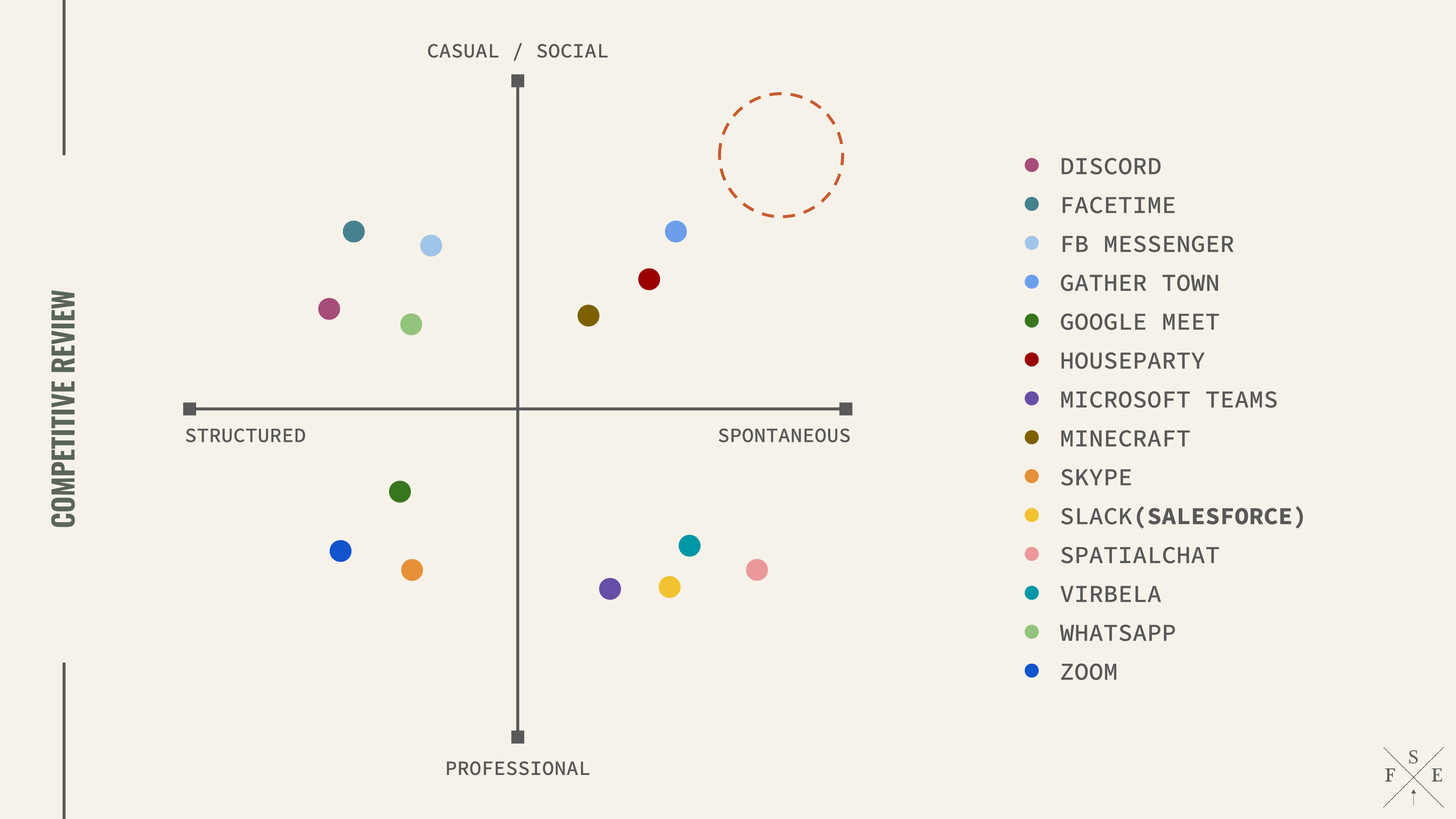
Market Size & Target Customers
For our target customer, our product aims to target middle class US millennials whose median annual income is around $70,000. Millennials are forecasted to spend about $1.4 trillion US dollars this year which accounts for approximately 30% of retail expenditures for the year. This generation currently makes up about 22% of the total US population. The market size of our target market will be $51.1 million US dollars. Although this is our main target customer, we also have other customer segments such as Gen-X and Gen-Z individuals, and businesses, schools, and organizations.
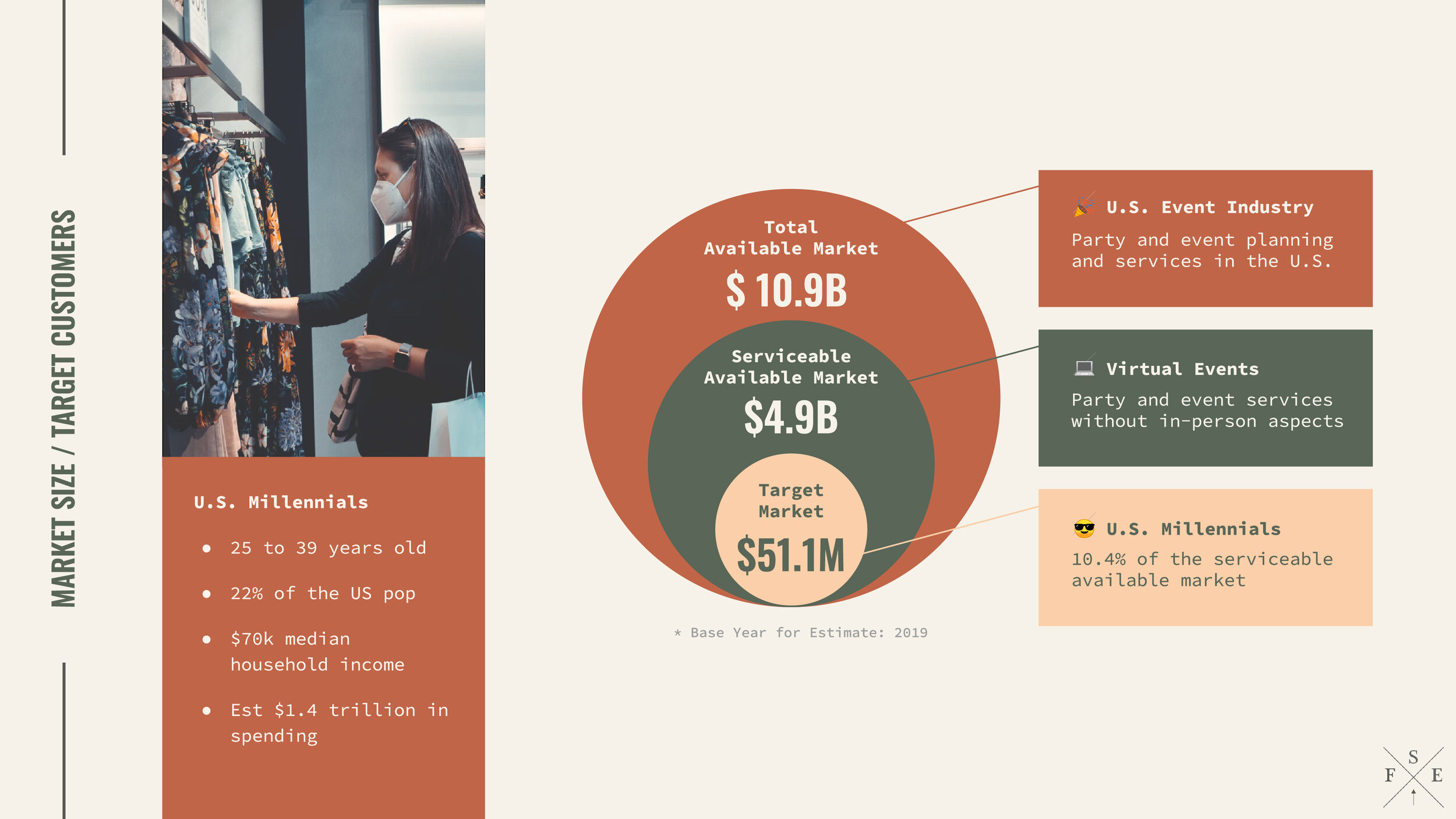
Prototype
Using Figma, we built our minimum valuable product to emphasize our value proposition of bridging virtual and real-life experience. The landing page you see here is a lot different than our competitors. We wanted to highlight our event planning expertise and focus on the feeling of togetherness. Our website aims to bring a human aspect to this space unlike most of our competitors that are focused on tech-oriented solutions.
Here you can see our pages in the order: Home, About Us, Pricing, Contact Us, Event Introduction, Instructions, and Event Space.
Sustainability Report
Our virtual events help reduce carbon emissions since people are connecting at home and traveling less. Based on each event, the number of guests, and location, we can calculate the amount of carbon emissions saved and share that with our users to help them see how using our platform has a greener impact on the environment.

Business Model Canvas
Building a BM Canvas helped us visualize the ways in which we could create, deliver, and capture value with this business plan. It facilitated a clear view of the overall functions of the start-up and helped brainstorm the various possible market segments to then create a multi-directional strategic plan for a successful business.
Our goal was to build a BM Canvas that breathes, evolves, and grows with time. The boxes highlighted in orange are future partnership plans, once the business starts gaining momentum.
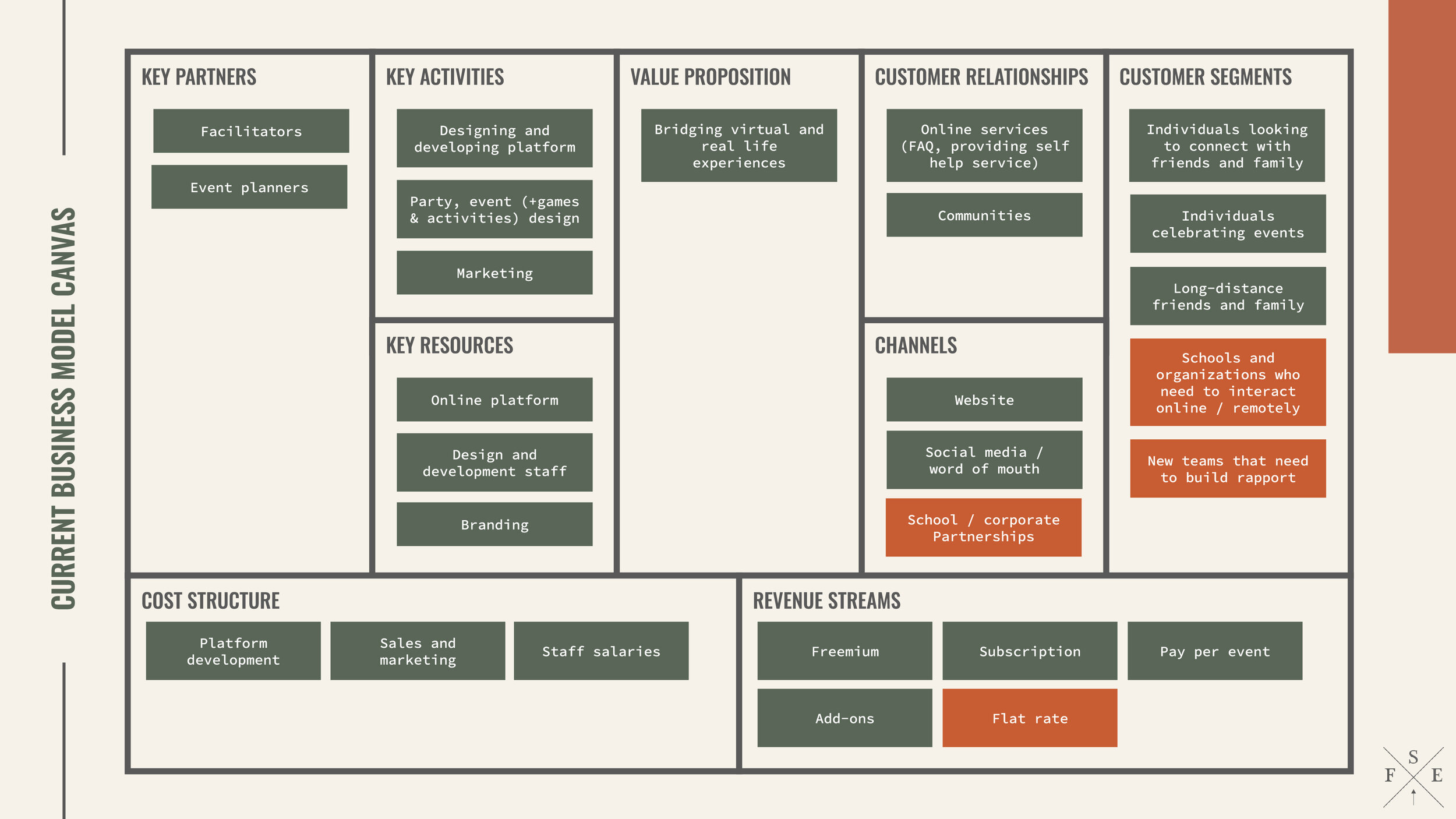
Methodology
The Business Model Canvas, pricing structure, and marketing strategy guided our financial projections for the first year.
We hope to start off the business strong in the first quarter with increased need for more immersive online interactive platforms because of the on-going pandemic. Then, with the release of vaccines, we anticipate sales to stagnate in Q2 with the expectation that people would want to take a break from their screens and go out a lot more, but we expect word of mouth to still spread with these personal interactions. In Q3, we expect numbers to grow significantly with the growing trend of virtual events and parties along with in-person ones to stay connected. Finally, we anticipate to grow the business in Q4 with education and corporate partnerships reaching users on a large scale.
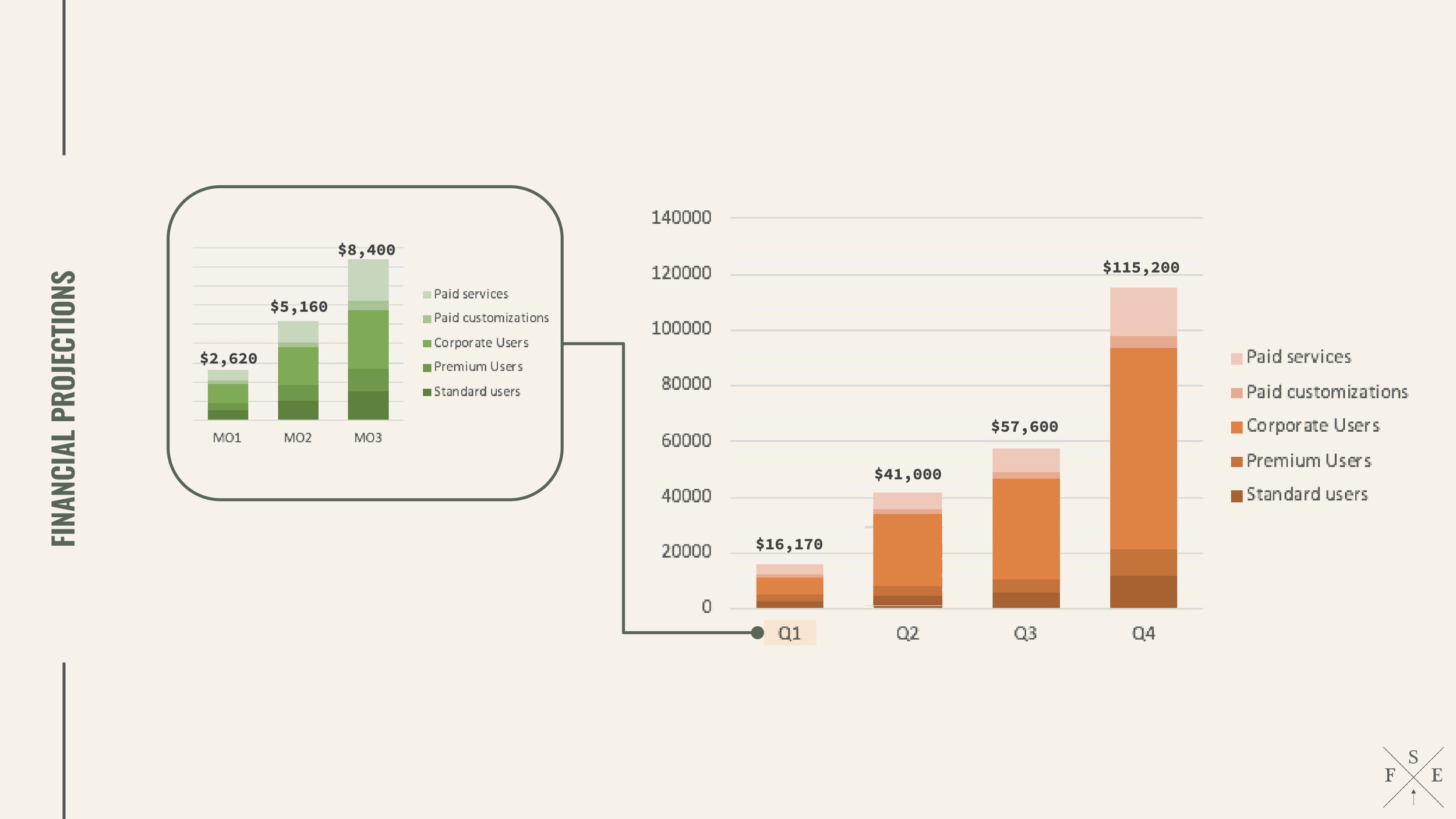
Future Strategies
Looking towards the future, we think there's an opportunity to bring in Augmented Reality (AR) in planning events for a better merge of virtual and in-person events.
There are a lot of similar platforms in this space- Gather being one of the biggest ones. Hence, we think there's an opportunity for us to partner with them to either plan events using their platform or work together to build a better, user-friendly, and immersive platform.
Lastly, our hope is for us to become the premier platform for events and eventually get acquired by a company like Zoom to help bring our event planning and human-centered approach to these existing tech companies. We already can see that there's a clear interest in communication platforms by these companies as evidenced by Salesforce on buying Slack.
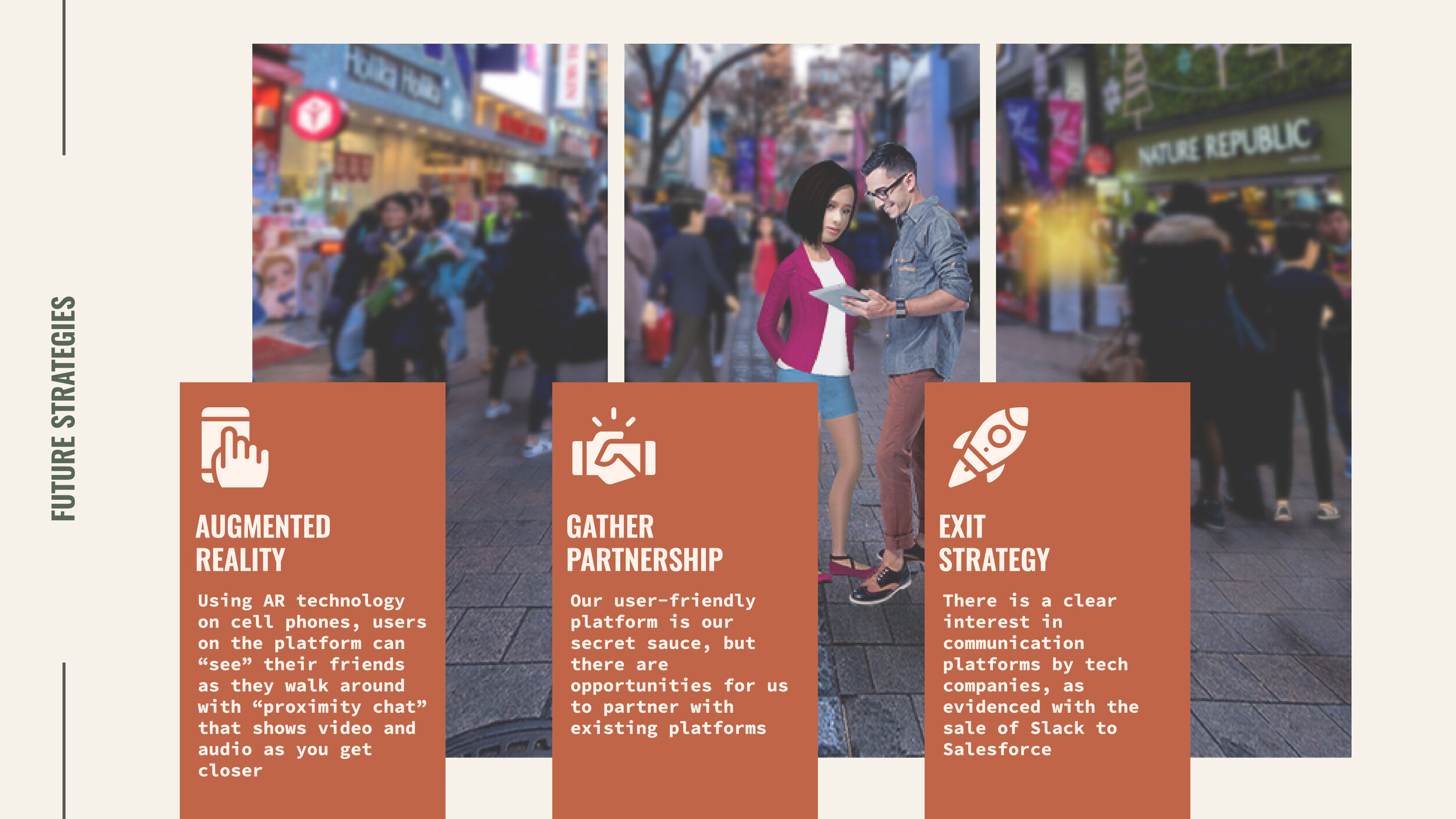
Results
Through this project I was not only able to collaboratively build up a sustainable business idea from scratch, but I was also able to gain a deeper understanding of applying design thinking and systems-thinking practices to business-model innovation. Also, I learned better collaborative methods and project management tricks to see it to completion.






